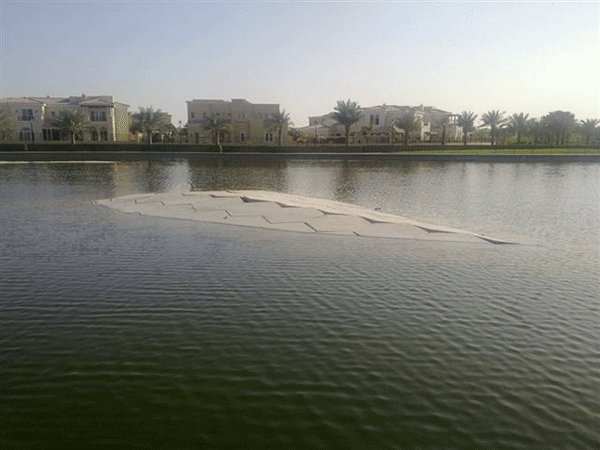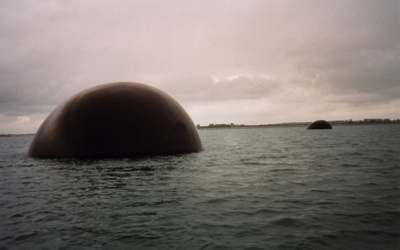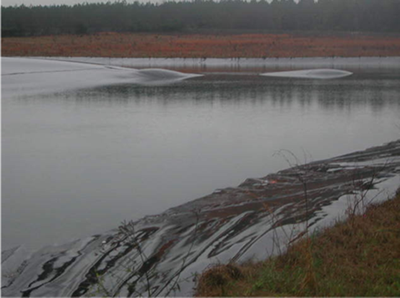When gas gets under a geomembrane, operations-impairing bubbles can form. A number of reasons may be responsible, such as installation damage, poor seaming, or a lack of appropriate construction quality assurance (CQA) measures like liner integrity surveys. These bubbles are commonly referred to as “whales,” and they can impact wastewater facilities, manure lagoons, ponds and other lined installations.
As this photo demonstrates, even 6 in. (150 mm) thick concrete slabs are insufficient ballast to prevent whales due to trapped air and rising groundwater under a geomembrane liner.

We must stress that these anomolies are avoidable. Good design and specification, proper installation techniques, and appropriate CQA should prevent these unusual occurrances. But to help further illustrate the impact these whales can have, we have a few more photographs.



Trapped methane gas is the culprit.
Photo courtesy of I-CORP INTERNATIONAL.











